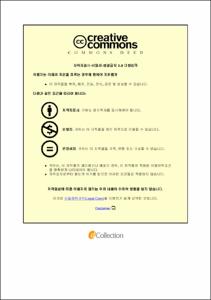대기압 유기화염 플라즈마를 이용한 고분자 표면 개질 연구
- Alternative Title
- Study on surface modification of polymeric materials using atmospheric flame plasma with solvents
- Abstract
- In recent years, atmospheric pressure plasma (APP) methods such as dielectric barrier discharge (DBD), plasma jet, microwave plasma, torch, etc. have been developed for various applications such as surface cleaning, surface modification, thin film deposition, etc.. However, these plasma systems showed a temporarily modified effect and caused short processing time. Additionally, a modified effect was strongly changed by a time. To overcome this, atmospheric flame plasma with solvents was newly developed. Surface treatment using pyrolysis of surface modifier (organic mixtures) by gas (LPG or LNG) were conducted to non-polared polymeric materials. Polyethylene (PE) and polypropylene (PP) which are most commercialized polymers, have poor adhesive force to other materials due to their non-polarity. To improve adhesive force, they require a pretreatment, such as chemical treatment or primer treatment. Organic solvents under flame will produce functional groups ester (-O-), a carbonyl group (>C=O), and/or a hydroxyl group (-OH), depending on mixture. These active groups produced by atmospheric flame plasma with solvents improve the surface hydrophilicity of non-polared PP or PE. In this study, a new pretreatment process, atmospheric flame plasma with solvents was developed to modify surface of non-polar materials. The results showed that after the treatment, adhesion of PE was much improved and the modification effect was kept for long time, comparing to normal plasma treatment. It could be expected that this system can replace a primer process which causes chemical toxicity to workers.
유기 화염 플라즈마를 이용하여, 에스테르기(-COO-), 에터르기(-O-), 카르보닐기(>C=O), 및 하이드록시기(-OH)로 이루어진 군 중에, 하나 이상의 작용기를 둘 이상 포함하거나 탄소-탄소 이중결합 포함하는 유기화합물을 포함하는 용매와 매체 가스 Liquefied petroleum gas(LPG) 또는 Liquefied natural gas (LNG)를 혼합하여 기화시켜 400 ℃ ∼ 1500 ℃로 가열함으로써 발생 되는 열분해를 이용하여 표면처리를 진행하였다. 이러한 표면처리방법은 무극성을 가진 고분자, 금속재료, 무기재료와 같이 접착, 도장 및 인쇄가 어려운 난소재는 표면을 친수성으로 개질하여 접착력을 향상시켜 사용하는데, 현재 산업화에서 사용되는 플라즈마, 코로나, 자외선 처리 등에는 친수성 유지 기간이 짧은 반면 본 연구로 사용된 화염 표면처리에서는 2주 이상의 유지 기간을 나타남에 따라 접착과 접합, 도장 및 인쇄가 어려운 난소재에 대하여 용이하고, 신속한 공정을 통하여 표면에 친수성을 부여할 수 있고, 친수성의 성질이 오래 유지되어 접착제, 프라미어, 잉크, 도료의 밀착과 부착력을 향상 시킬 수 있는 표면의 개질 방법의 유기 합성물이 개발되었다. 이러한 전처리 공정은 경제적 또는 환경적으로 문제점을 야기시키기도 한다. 본 연구에서는 새로운 전처리 공정으로 액상 시약을 이용한 탄소 라디칼 화염개질 처리법을 이용하여 비극성 소재에 에테르기, 카르보닐기, 에스테르기, 하이드록시기 등과 같은 작용기를 재료 표면에 부여하여 접착력과 도료의 젖음성 등을 향상 시킬 수 있는 연구를 진행하였다. 본 연구를 통하여 기존의 수작업 프라이머 공정을 대체하여 작업자의 안전 및 공정 단축에도 기여 할 수 있을 것으로 기대한다.
- Issued Date
- 2022
- Awarded Date
- 2022. 2
- Type
- Dissertation
- Publisher
- 부경대학교
- Affiliation
- 부경대학교 산업대학원
- Department
- 산업대학원 응용화학공학과
- Advisor
- 이원기
- Table Of Contents
- Ⅰ. 서론 1
Ⅱ. 이론적 배경 3
1. 표면처리 3
1-1. 표면처리 기술 종류 5
1-2. 표면처리 국내/해외 시장 12
2. 플라즈마 14
2-1. 대기압 플라즈마 14
2-2. 대기압 화염 플라즈마 18
2-3. 대기압 유기화염 플라즈마 19
2-3-1. 이중버너 장치 24
2-3-2. 기화조 27
2-3-3. 가스혼합장치 29
Ⅲ. 실험 31
1. 재료 31
2. 접촉각 34
3. FT-IR Spectroscopy 35
4. Atomic Force Microscope 36
5. Cross Cut 37
6. 접착 강도 39
Ⅳ. 결과 및 고찰 41
1. 접촉각 41
2. FT-IR Spectrometer 44
3. Atomic Force Microscope 47
4. Cross Cut 50
5. 접착 강도 56
Ⅴ. 결론 58
Ⅵ. 참고문헌 59
감사의 글 60
- Degree
- Master
- Files in This Item:
-
-
Download
 대기압 유기화염 플라즈마를 이용한 고분자 표면 개질 연구.pdf
기타 데이터 / 1.48 MB / Adobe PDF
대기압 유기화염 플라즈마를 이용한 고분자 표면 개질 연구.pdf
기타 데이터 / 1.48 MB / Adobe PDF
-
Items in Repository are protected by copyright, with all rights reserved, unless otherwise indicated.